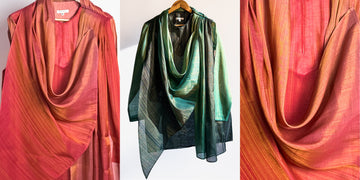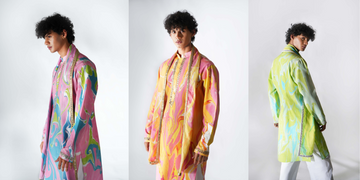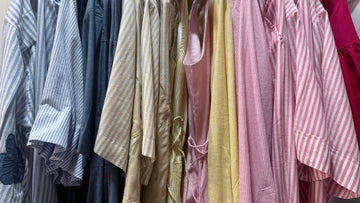Fashion That Breathes: Why We Choose to Create Slowly
Walk through any mall, scroll through any app, and you’ll see fashion that moves fast. New drops weekly, trends changing by the hour, prices that feel almost too good to be true. And they often are. This is the world of fast fashion, a system designed for speed, scale, and turnover. But as consumers begin to ask more questions about how and where their clothes are made, a quiet movement is gaining momentum: slow fashion.
Not a trend, but a mindset, slow fashion invites us to rethink our relationship with clothing altogether.
What Is Fast Fashion, Really?
Fast fashion is the model most mainstream brands operate on today: producing clothes in massive quantities, at low cost, with rapid turnaround times. The idea is simple, keep things cheap and keep things moving. But behind that low price tag is a long chain of compromise.
Fast fashion often relies on:
-
Underpaid labor in factories with poor working conditions
-
Synthetic, low-quality materials that don’t last beyond a few washes
-
Excessive waste, with millions of unsold garments ending up in landfills or incinerators each year
It’s a cycle of overproduction, overconsumption, and disposability, and it’s costing us more than we realize.
What Makes Fashion “Slow”?
Slow fashion is a response - and a return - to something more human. It’s about making and buying clothing with intention. Instead of mass-producing thousands of units, slow fashion brands often create limited runs or made-to-order pieces. The focus is on quality over quantity, ethics over shortcuts, and timelessness over trends.
Slow fashion embraces:
-
Sustainability - natural materials, less waste, longer lifespans
-
Transparency - knowing who made your clothes, and how
-
Craftsmanship - garments that are designed to be repaired, re-worn, and remembered
It’s a quieter, more thoughtful way of doing fashion — and one that respects people and planet.
Why Is Slow Fashion More Expensive?
This is one of the most common and fair questions. Why pay more for a dress or a shirt, when a similar one exists at a fraction of the price? The answer lies in what you’re really paying for. With slow fashion, the cost reflects:
-
Fair wages for skilled artisans and workers
-
Time-intensive production - not machines spitting out hundreds an hour
-
Higher-quality, often natural materials that last longer and wear better
-
Less waste, since many slow fashion brands don’t overproduce or keep stockpiles
It may feel more expensive upfront, but over time, it often saves both money and conscience. You buy less. You buy better. And you keep your clothes longer.
Why It’s Worth It
We’re used to seeing clothing as something disposable. But what if it wasn’t? What if every piece you wore had a story, of who made it, how it was made, and why? What if fashion felt good and did good?
Slow fashion isn’t just about aesthetics. It’s about aligning our purchases with our values. About choosing longevity over landfill. Craft over compromise. It invites us to fall back in love with our clothes, not just how they look, but how they’re made, and who they support.
Where Erised Fits In
At Erised, we’ve chosen to build a brand that honors the values of slow fashion. Every piece we make is made on order, no mass production, no deadstock, no rush.
We work closely with our team of artisans to create garments that are detailed, carefully constructed, and made to last. This also means our pricing reflects the time, skill, and ethics behind each piece, not just the final silhouette. We’re not the fastest. But we believe we’re building something more meaningful, one order at a time.
In Closing
Slow fashion is not about buying more. It’s about buying less and better. It’s about pausing to ask how something was made, not just how fast it will arrive. And in a world that feels increasingly rushed, making a slower, more intentional choice is a quiet form of rebellion and a beautiful one.





